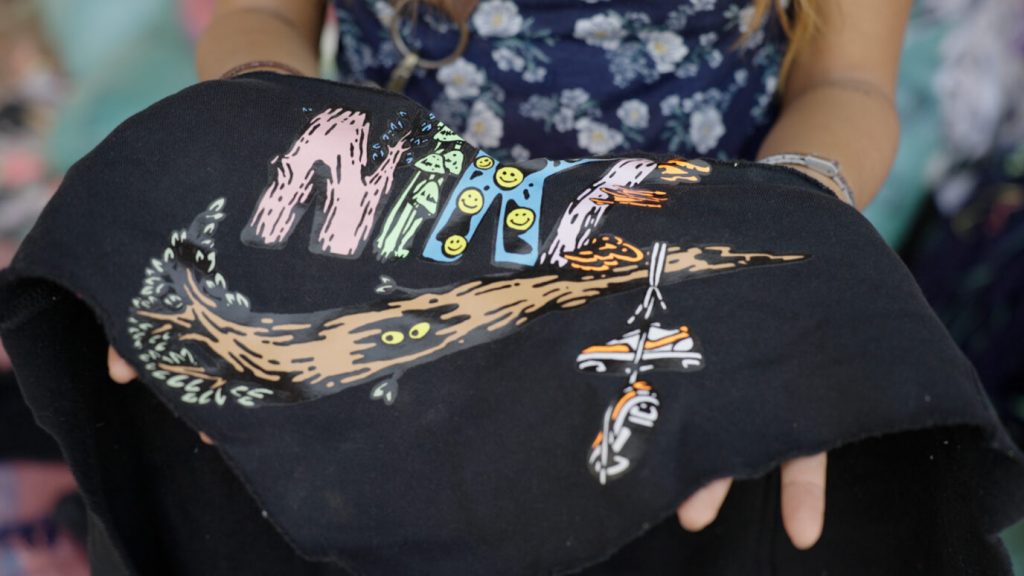What exactly happens to emissions from clothing manufacturers?
.
What happens to those bits of material not used by the fashion industry?
Investigative journalists have just issued a report:
An Unearthed investigation has revealed how off-cuts from Cambodian factories supplying major brands are being used to fuel brick kilns – exposing workers to toxic fumes.

Our investigation found tags, labels, footwear, fabric and garment scraps from Nike, Ralph Lauren, Michael Kors, Reebok, Next, Diesel, and Clarks at five different kilns alongside evidence that kilns were using garment waste in their fires. …
It is also exacerbating the carbon footprint of clothes destined for Europe and the US, despite commitments to cut emissions from clothing manufacturers.
“The burning of acrylic garments, especially when combined with plastic bags, hangers, rubber and other waste as occurs in Cambodia, releases plastic microfibres and other toxic chemicals into the immediate environment which compromise the health of workers and neighbours on a short and long term basis. The human impacts, in particular, are substantially worse than burning wood and have been highlighted in a recent UK parliamentary report as a major problem in the industry,” says Dr Laurie Parsons of UK’s Royal Holloway University. Parsons co-authored a seminal 2018 report exposing the practice of garment incineration in Cambodian kilns.
Garment waste from Nike other leading brands fuel toxic kilns in Cambodia – Unearthed
The Daily Mail has picked up the story:
Toxic pollution shame of high street brands over burning of offcuts as Next and Clarks are accused in fashion waste scandal
Clothing scraps and labels from big British fashion brands are being illegally burnt
- The offcuts are incinerated in giant plastic bags and emit poisonous fumes
- It is illegal to burn factory waste at the warehouses in Cambodia
- The brands have been accused of ‘hypocrisy’ after pledging eco ‘responsibility’
The fashion industry doesn’t exactly have a good reputation:
The fashion industry is one of the largest polluters in the world, just after the oil industry.[1] … To be more sustainable, the fashion industry needs to find new ways to reuse materials and eliminate pollution to minimize the damage that has been done.[2] The industry produces an estimated 10% of all greenhouse gas emissions.[3] … The textile industry is the second greatest polluter of local freshwater in the world,[4] and is culpable for roughly one-fifth of all industrial water pollution.[5] Some of the main factors that contribute to this industrial caused pollution are the vast overproduction of fashion items,[6] the use of synthetic fibers, and the agriculture pollution of fashion crops.[7]
Environmental impact of fashion – Wikipedia
With more in the news from just the last seven days:
Greenwashing: What To Look Out For In Fast Fashion | pebble magazine
10 Stunning Fast Fashion Waste Statistics | Earth.Org
From bad to worse in fast fashion’s global sweatshop
The Sidmouth SolarPunk pages carry stories on making fashion more sustainable: